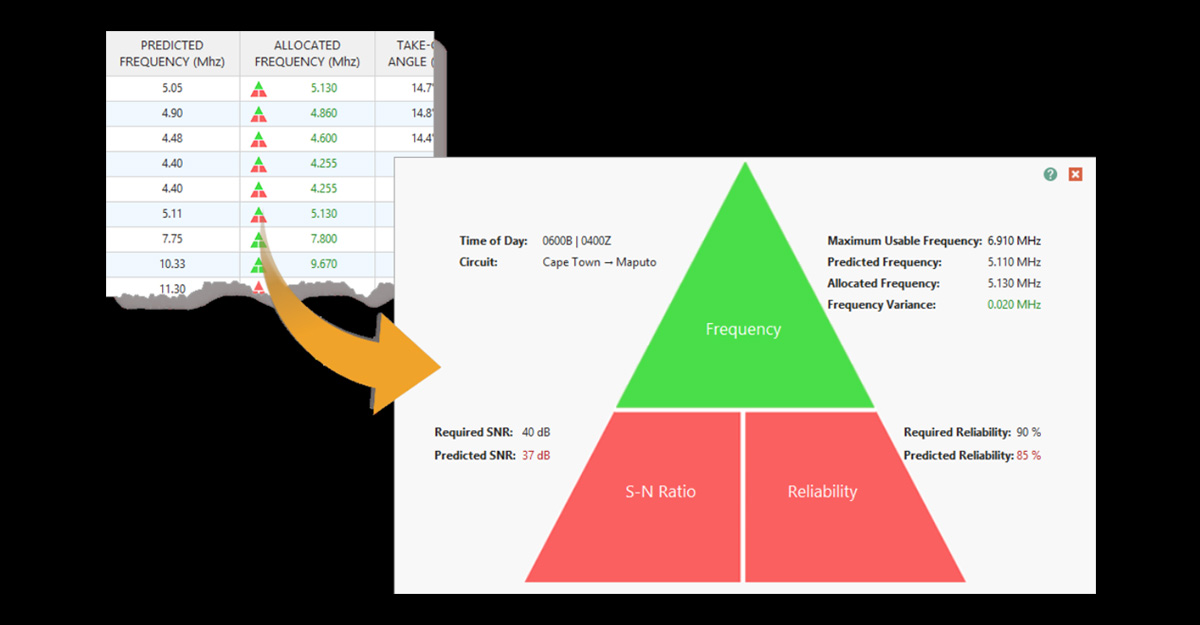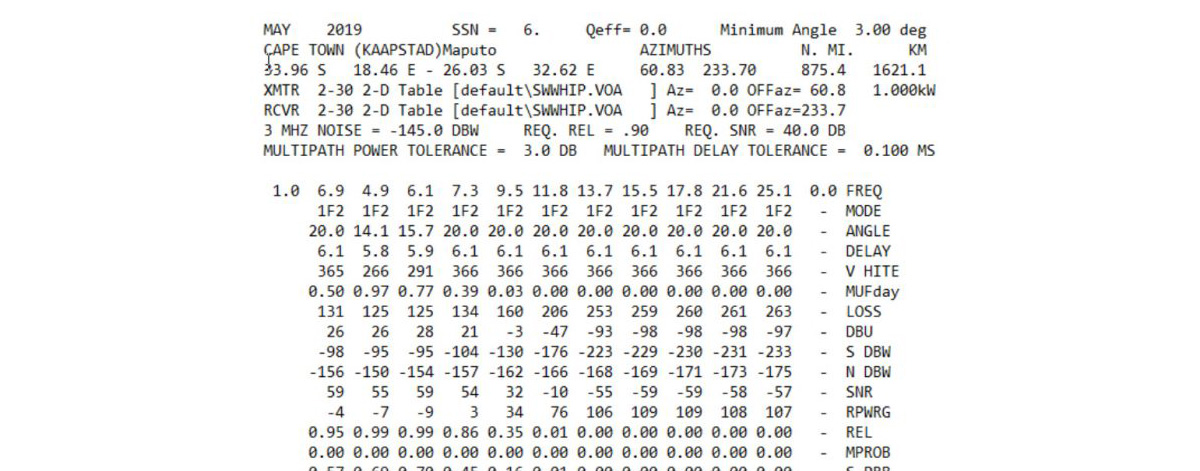
13 Aug New SANSA app to improve SANDF secure communications
Imagine relying on a wall of numbers to find the best rush-hour route from your home to work, instead of your mobile phone’s map app, which uses live traffic reports to calculate the fastest route as you drive. What navigation apps have done for modern commuting amid constantly changing traffic, SANSA engineers have done for a type of communication technology that relies on signals that travel via the ionosphere and are sensitive to constantly changing space weather.

New and improved IOCAP tool: the user-friendly interface and graphics makes the job of a high-frequency propagation software operator far less daunting.
This type of communication, called high-frequency (HF) radio, was common before satellite radio communication became the norm, particularly for long-distance communication.
Countries that do not have access to satellite communications still rely on it, and it offers a variety of security perks that the South African National Defence Force (SANDF) and other parties still use.
However, HF signal propagation (how these radio waves travel) is sensitive to the volatile changes in space weather that occurs in the ionosphere, so the SANDF needs accurate forecasts of the conditions that might affect usable frequencies for HF communications.
SANSA has thus been providing space weather data to the SANDF for better HF signal propagation forecasts for several years. And now, software engineers have made the forecasting easier than ever: they’ve developed a visual, intuitive tool called Ionospheric Characterisation, Analysis and Prediction (IOCAP).
Before, operators relied on unintuitive tables of raw data – a wall of numbers, so to speak – to make sense of how space weather conditions might affect the way HF signals travel (or propagate).

“These products are technical, and very hard to read, so people wanted an operational solution,” says SANSA’s Piet van Zyl, who is responsible for developing the IOCAP tool.
Techichnical operators who cut their teeth on HF communications are adept at interpreting the “wall of numbers” software, and it is still ideal for research. But younger operators, not as clued up on the underlying science yet, need something visual and intuitive for forecasting. “It’s a formidable thing to study,” says Van Zyl.
In other words, the software SANSA has created makes the jobs of these high-frequency propagation software operators much less daunting. In fact, the IOCAP tool looks set to change the landscape of high-frequency predictions like nothing else on the market.
“We created a canvas with a dual-map system so that you can zoom right down to street-level,” says van Zyl. The IOCAP tool also makes use of colour-coded charts to help the operator make sense of the numbers.
Having created a much more immersive environment for users, the IOCAP tool also removes the need to worry about complex settings – the default is intuitive and works well. The developers devised what they call the triangle of prediction, which uses colour to display how useful a prediction may be.
The IOCAP tool also helps train new operators on how to make sense of the scientific theories behind the frequency predictions. “They see the science behind it all demonstrated practically in an operational setting in front of them; this makes it an extremely valuable training tool.”
Feedback has been positive at different levels of experience. For example, a SANDF colonel said all he needs now is his “radio and this software,” as opposed to the many tables he would need before, says Van Zyl.
“The production software we have right now is the result of this sort of feedback,” he says.
Other improvements include being able to make two paired frequency predictions for the two transmitters of a circuit in one step, and predictions for communication with moving receivers such as on a ship or a vehicle.
Van Zyl hopes the tool will be implemented successfully in the SANDF – he says it would be a great example of a modern, convenient, innovative, and proudly South African product.



